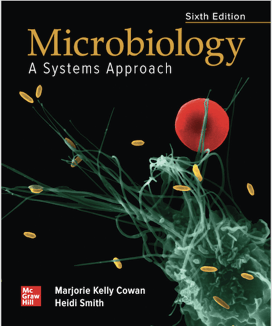Allergic to Online? Two Instructors make it simple with advice to teaching online.
Published July 30, 2020
While many instructors have begun voluntarily teaching online over the past few years, nearly everyone was forced to shift to online teaching and learning as the COVID-19 pandemic gained momentum. Hybrid courses, in which lectures were offered online and students and instructors met in person only for the laboratories, had become common place in American colleges. Science instructors with “wet” labs have long been reluctant, rightly so, to move those labs online, but COVID-19 left them no choice.
You can hardly imagine a worse circumstance for converting a traditional course to an online course than the situation this spring with the pandemic. Campuses were shut down precipitously and instructors told to complete the semester with online instruction. The consensus is that learning in those courses suffered. Now we have a little bit of time to plan for online courses in the late summer and fall. Your campus will no doubt be providing guidance for how to optimize that experience.
We are the authors of two Microbiology for health science students, Microbiology: A Systems Approach (6th edition) and Fundamentals of Microbiology: A Clinical Approach (3rd edition). Both of us have taught online and we have some quick tips that might address your most pressing issues.
It’s been our experience that almost all instructors moving online (including ourselves) have these very legitimate concerns:
- Lab, labs, labs
- The need for instructors to be constantly available
- Lack of personal interaction/discussion
- Students for whom online learning is not ideal
Labs:
One of us (the much older one, Kelly) has been involved in discussions at the American Society for Microbiology for over 20 years about the pros and cons of online labs. Very few people are happy with the idea of them. There is no substitute for an in-lab experience for microbiology students. Agreed. But when necessary, instructors and education technology companies have been very creative. There are now a variety of digital lab platforms available. Most of them lead a student to step through lab procedures virtually. Some include demonstration videos. Many instructors adopting these in the past have used them as a pre-lab warm-up, since students are notoriously poorly prepared before labs - for good reason! It is difficult to envision extremely hands-on techniques simply from reading a written description of them. Walking through these steps online was immensely useful. But now that many of us are forced into online-only labs, we have adjustments - and compromises - to make.
Both Heidi and I are using Connect Virtual Labs, a McGraw-Hill product that is about as comprehensive as it gets, in terms of a student’s ability to make mistakes, correct their mistakes, and learn. Click here to watch a video demonstration and see the full list of lab simulations available.
Other popular options are at-home wet labs, with students being sent commercial kits, and/or the use of “kitchen chemistry” items they procure themselves. While these kits do allow students to work with materials hands-on, they do pose various challenges and fall short in some areas. The microscopes are often poor quality and lack oil immersion for good viewing. It is also very hard for one student to safely and accurately manipulate the materials without having a partner to help. And finally, when the student’s experiment fails, they have no extra materials to try it again and no opportunity to look at correct examples to learn from.
Constant access to you:
There is no more need for students to have constant access to you in on an online course than in a face-to-face course. Just because their content is available 24/7, doesn’t mean you have to be. Yes, they will do their assignments at 2 am, but you can sleep peacefully if you lay out the parameters of communicating with you from the outset. Typically, instructors will include a paragraph like this in their course information or syllabus:
This is an asynchronous course, meaning you do it on your own (meeting deadlines, of course) at a time of your choosing. Just be aware that if you wait until the very last minute to do an assignment and have a question about it OR a problem with your technology, I might not be available immediately to help. My pledge to you is to check my email Mondays through Fridays at least twice a day and respond to emails received within 24 hours (I will often respond within a few hours. Emails sent over the weekend will be responded to by Monday, although you may receive a response sooner.
This excerpt from the syllabus may need to be sent to students (ahem) individually when they are distraught about missing a deadline because you were sleeping.
Student interaction:
This is possibly the trickiest part of an online course to design. But you can find ways, using both carrots and sticks, to make this happen. Even in totally asynchronous courses, assignments to interact on a discussion board can lead students into meaningful dialogues with each other. Usually students report at the end of my courses that they learned a lot from their classmates, and in a more understandable way than from me.
There are various ways to do this. Here is my method. It maximizes student-student interaction and student-instructor interaction, and, surprisingly is very low maintenance on the part of the instructor.
Each week (module) there will be a two-part Discussion assignment. Part A of each discussion will provide a prompt to which you will post an initial response. You will not be able to see others’ responses until you have posted yours. Modules open at midnight on Sunday; Part A of the discussion assignment must be posted by Wednesday 5 pm. Part B involves you commenting on at least two other people’s posts, by the end of the module, Sunday night. I will also respond to some of your posts, perhaps asking you a question. If that is the case, you should be sure to respond to me in addition to two other people’s posts.
It sounds like a lot of work for you, the instructor, but it is not. My routine is to check the statistics on the learning management system, to see who responded, on Thursday morning. When I have time (and I usually make time because I am so interested) I look through the posts and comment on a few. But this means that, in a pinch, I can save time by not doing this. Especially after the first two weeks, they are self-propelling. Then on Monday morning I check the statistics again to see who provided comments on at least two other posts. I keep a list of who I have commented on and check to see if there is an answer to me. My grading rubric is as follows:
Original post on time: 2 pts
Responded to two posts on time: 4 pts
Used classroom register*: 2 pts
*Classroom register refers to using punctuation, capitalization, etc.
I want to explain a bit about how this is easy to “grade.” The two learning management systems I have worked with have both had a report that shows how many times a student has interacted on the discussion board, during the week. This is my note to myself about grading discussion board participation.
NOTE TO ME
- Thurs morning Check “statistics” and give grades for posting on time. Can simply put “0” in place for those who did not and then you’ll know everyone else got it done.
- Monday morning.
- Check “statistics” and give grades for the 2 responses.
- Look for responses to your posts (at a minimum).
- Spot check for classroom register.
- Post Discussion Board grades. (This gives students a chance to challenge my math.)
So, harkening back to item #2, means, you only have to even think about the Discussion Board twice a week.

Also: full disclosure: Although I characterize this as lower maintenance than you might expect, I have never used it in a class larger than 40. But…experts believe that online courses should not exceed 30-40 students.
Student for whom online is not ideal:
Anyone who has taught an online or a hybrid course, knows that not every student is suited for online courses. Brand new first-generation students, those with less self-discipline, etc, typically have more problems than others. In this pandemic, those students will often be have no choice but to take online courses. Fortunately, there are measures you can take that tend to make it better rather than worse.
- Empathize with them; if possible, let them know you are also feeling awkward and stressed, and that you will work through things together with them. I always have a policy that whenever I make a mistake due to some technical or personal failure, it will never harm them. I also try to be aware of, and receptive to, situations that make their compliance more difficult.
- Enlist them! In every online course I have ever taught, there was at least one student who knew more about the technology than I, and they (who probably would have been in the front row in class) were always way ahead of me and would even nudge me to post assignments on time, and that I had something on the wrong settings. Use them.
- Frequent deadlines. This is good in F2F and online courses: Have more than one weekly deadline for course material. (I know one instructor who has one deadline - the last day of the semester!) It keeps students engaged, even when they have other things tugging at their schedule.
- Feedback. if you are using Connect or other programs that auto-grade your assignments, it is a good idea to address commonly missed questions. For exams or other summative evaluations, post examples of good answers. Show them “good” student work, rather than just the correct answer. With this, students see that it is not “beyond” them, and the ones whose answers were posted (anonymously) get an extra shot of confidence, and pride.
- Predictability: Use the same schedule every week, rather than assigning things randomly. Here is an example of my weekly schedule for them, much like the one Heidi talked about. For less prepared or resourced students, predictability gives them a scaffolding that makes navigating a course less daunting.
Of course, there are many factors in designing any course. Online courses are no exception. but you, instructors, have already done so many difficult things in getting to where you are. Partner with you students. Contact me, Kelly, if you have more questions! We can do this!
I have three other articles about teaching at this link, if you are interested:


About the Authors
Kelly Cowan has taught microbiology to pre-nursing and allied health students for over 20 years. She received her PhD from the University of Louisville and held postdoctoral positions at the University of Maryland and the University of Groningen in the Netherlands. Her campus, Miami University Middletown, is an open admissions regional campus of Miami University in Ohio. She has also authored over 25 basic research papers with her undergraduate and graduate students. For the past several years, she has turned her focus to studying pedagogical techniques that narrow the gap between under resourced students and well-resourced students. She is past chair of the American Society for Microbiology’s Undergraduate Education committee and past chair of ASM’s education division, Division W.
Heidi Smith leads the microbiology department at Front Range Community College in Fort Collins, Colorado. Collaboration with other faculty across the nation, the development and implementation of new digital learning tools, and her focus on student learning outcomes have revolutionized Heidi’s face-to-face and online teaching approaches and student performance in her classes. The use of digital technology has given Heidi the ability to teach courses driven by real-time student data and with a focus on active learning and critical thinking activities.
Heidi is an active member of the American Society for Microbiology and participated as a task force member for the development of their Curriculum Guidelines for Undergraduate Microbiology Education. At FRCC, Heidi directs a federal grant program designed to increase student success in transfer and completion of STEM degrees at the local university as well as facilitate undergraduate research opportunities for underrepresented students.
